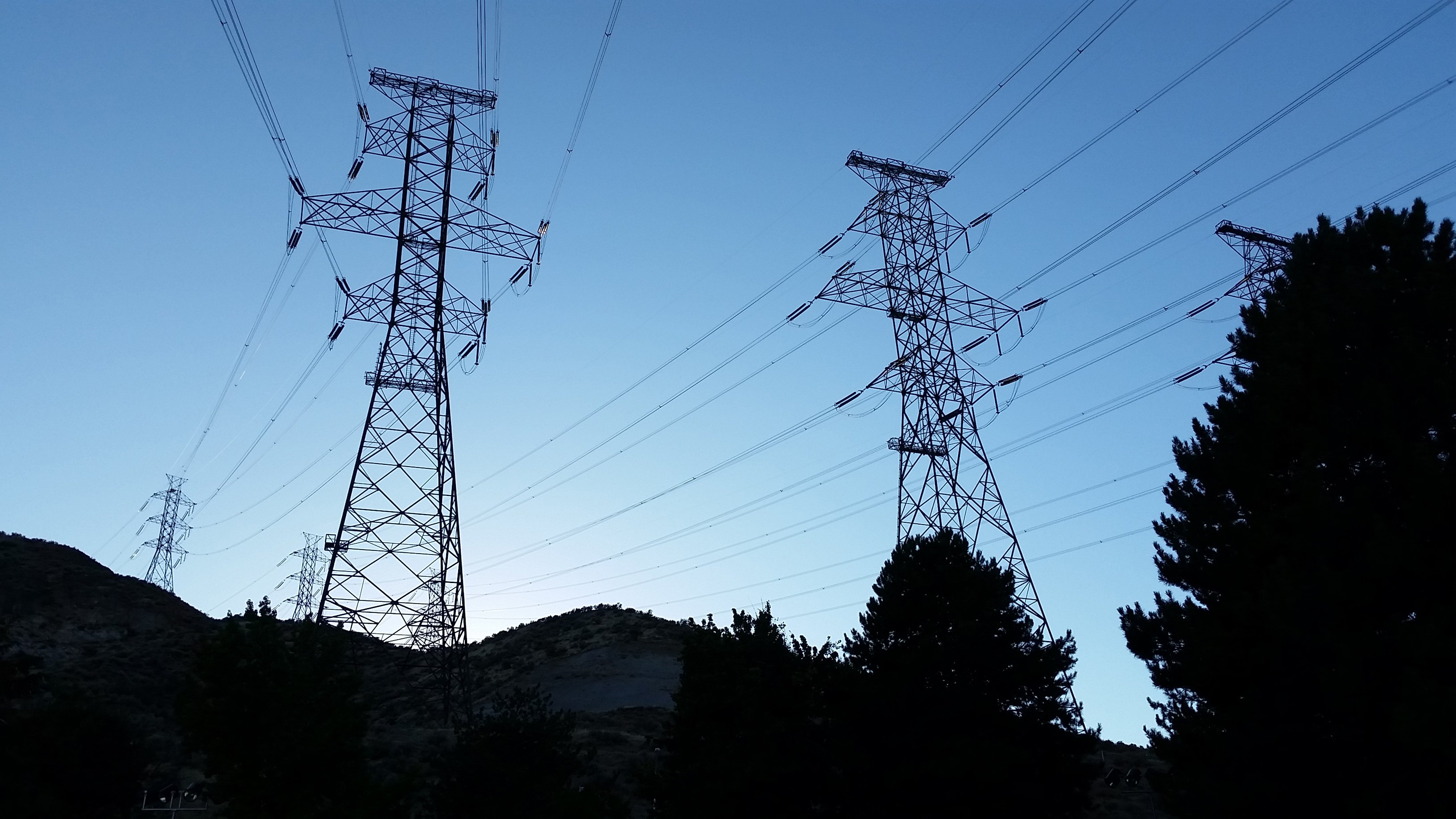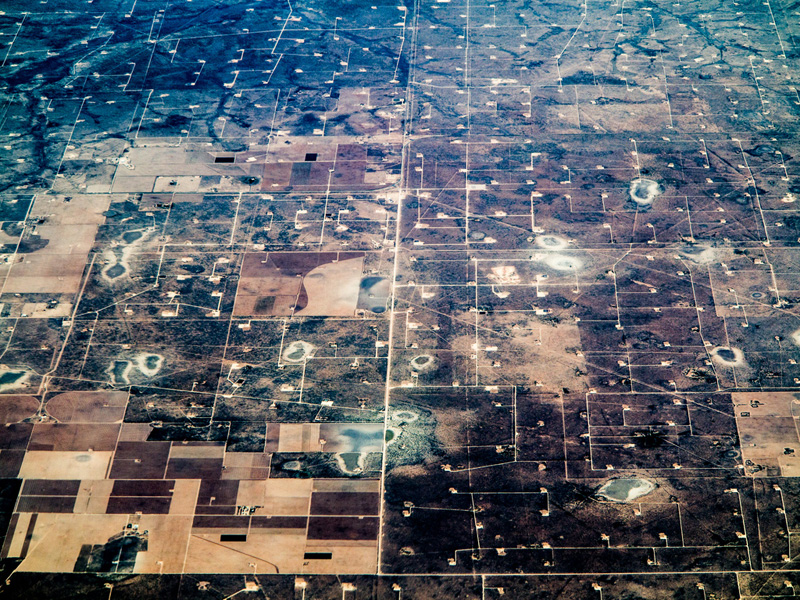In the heart of the West Texas oil patch, a new fracking frenzy is putting a strain on groundwater.
–
by Christopher Collins
@collins_reports
December 11, 2017
Charles Phillips was in his pasture one day last year when he heard the sound. At 85, Phillips doesn’t hear as well as he used to, but he had no problem picking up the unmistakable squeal of a drill boring through rock. That’s odd, he thought. Why would my neighbor be drilling a water well?
He followed the sound west across one of his pastures, where a couple of black Angus cows and quarter horses were grazing, to the neighboring fence line. There, his suspicions were confirmed.
Phillips counted a dozen new water wells being drilled. The ruckus continued for a week and a half until the work crew — five men and three trucks — moved on to drill a dozen wells at another spot about a third of a mile to the southwest.
Like many folks in the parched oil patch north of Big Spring, Phillips had taken notice of the football field-sized pits of water popping up at the edges of cotton fields, as well as the fat, serpentine water lines crisscrossing the county roadways. All signs pointed to the possibility that someone was developing his neighborhood as a water source for the fracking bonanza that has overtaken parts of the Permian Basin. And if business was good, he figured, it would be bad for him, his wife, Loyce, and their neighbors.
“It all happened before we knew what was going on. It was said and done before anybody could do anything about it,” Charles told me when I met him and Loyce at their brown-brick, ’70s-style home one morning this September. Their 19-acre property is one of about 130 homes on ranchettes just north of Big Spring. About 40 miles northeast of Midland, the neighborhood happens to sit where two vast underground caches meet. In the center of Howard County, the Ogallala Aquifer, which underlies parts of eight states, approaches its southernmost limit and the Permian Basin, one of the richest oil fields in the world, finds its northern fringe.
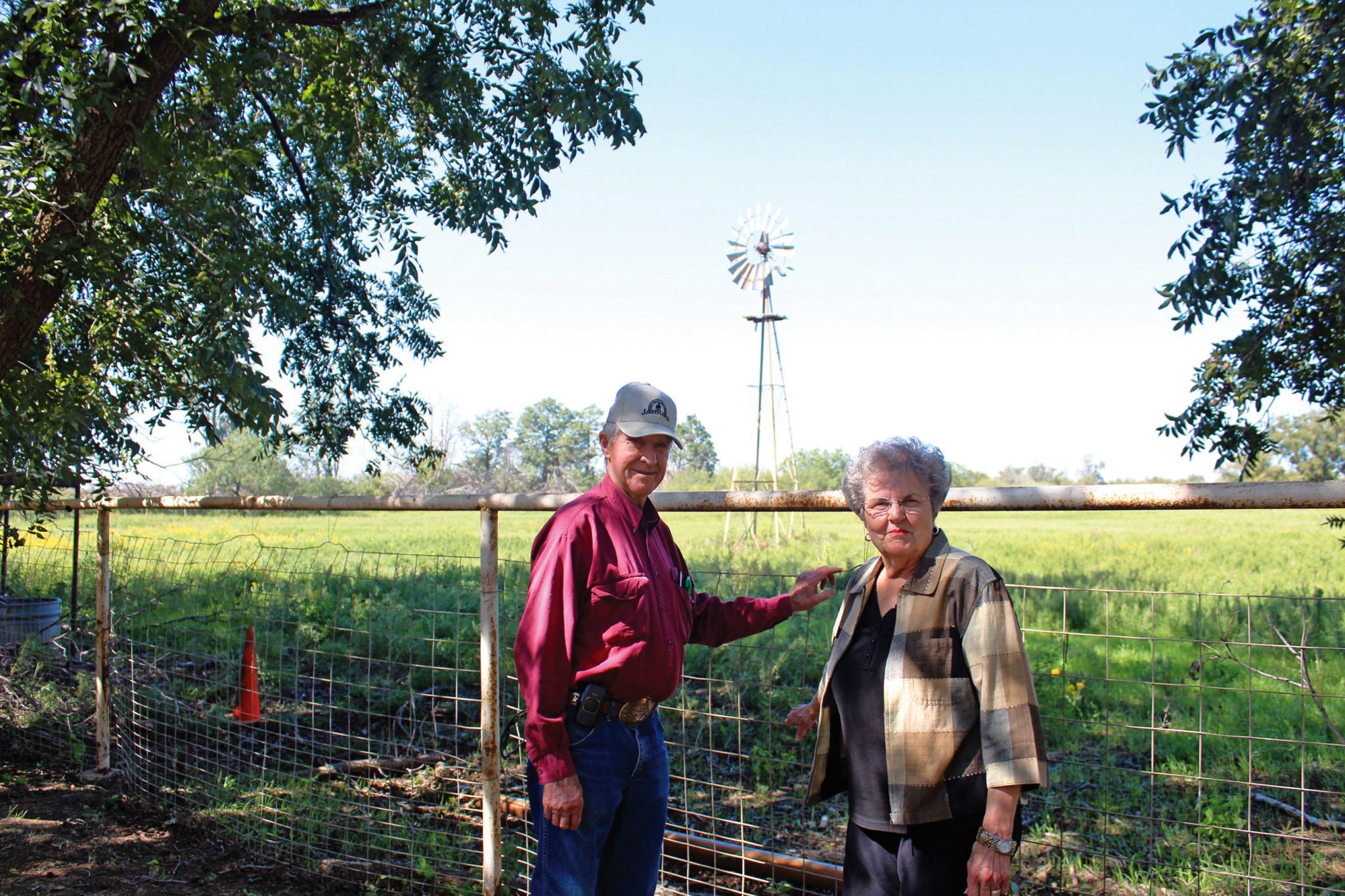
Though the Phillipses live only about 4 miles from town, municipal water lines don’t run here. Like their neighbors, they instead rely on individual wells that tap the Ogallala for drinking, cooking and doing laundry. Once considered an inexhaustible resource, the Ogallala has been severely depleted by decades of pumping to grow crops on the High Plains. Recharge from rainfall occurs so slowly that on the human timescale, the Ogallala will never recover.
Concerned that the new wells could lower their water table, Charles and Loyce gathered signatures from 72 of their neighbors asking their local water conservation district to “investigate and help stop the overuse” of water in the area.
It’s virtually unheard-of to challenge industry in the heart of the West Texas oil patch. And like most people in the Big Spring area, the Phillipses have personal connections to the oil business. Charles worked 24 years in the warehouse at the local oil refinery before becoming a rancher. When Loyce was young, her brothers worked on oil rigs to pay their college tuition.
Charles dresses the part of a rancher: denim shirt, jeans, boots and a ball cap. Loyce is 79, a retired elementary schoolteacher with short, carefully coiffed gray hair and a patterned blouse.
“We don’t want to sound like we’re rabble-rousers or vindictive. We just wish somebody would pay attention to what these guys are doing,” Loyce said.
“It all happened before we knew what was going on. It was said and done before anybody could do anything about it.”
“These guys,” as it turns out, were West Texas H2O, a Midland-based company run by Michael Grella, a former oilman. At the time the Phillipses’ petition was filed in late 2016, the company operated in five West Texas counties and owned or leased 20,000 acres in Howard County alone. In April, the company was acquired by GlobeLTR Energy, which has since changed its name to Gravity Oilfield Services.
In this arid, mostly treeless part of the state, where a little under 20 inches of rain falls each year, the proliferation of fracked wells has also created a vast demand for water. Hydraulic fracturing, as the name implies, requires water — and lots of it. In a typical frack job, millions of gallons of water, along with sand and chemicals, are pumped under high pressure to fracture the rock and release oil and gas. To supply the thousands of wells drilled every year in the Permian Basin, West Texas H2O and other commercial water companies have struck deals with landowners to mine groundwater and then pipe it to earthen, tarp-lined holding pits, where the water is then moved by pipe and truck to fracking sites.
In 2010, an estimated 100 million gallons of water were used for fracking in Howard County alone. By 2015, that number had already increased tenfold to nearly 1 billion gallons, according to the Texas Water Development Board.
This flurry of frack-related water pumping isn’t limited to Howard County. Last year, 30 billion gallons of water were used for fracking in the Permian Basin. Energy research firm IHS Markit predicts that number will rise to 100 billion gallons by 2020. That’s enough water to fill the Dallas Cowboys’ AT&T Stadium 128 times. The rush on groundwater is playing out in small towns all across the Permian Basin, where crude abounds but water is scarce. Near Van Horn, in far West Texas, a land baron is planning to pump 5.4 million gallons of water daily for oil production, raising the ire of nearby farmers and environmentalists who worry the pumping will drain the spring-fed Balmorhea State Park. Near Marfa, a water company is preparing to pipe 8 million gallons of water a day for 20 years to oil rigs, which would consume 2 to 3 percent of groundwater resources in the desert-like area.
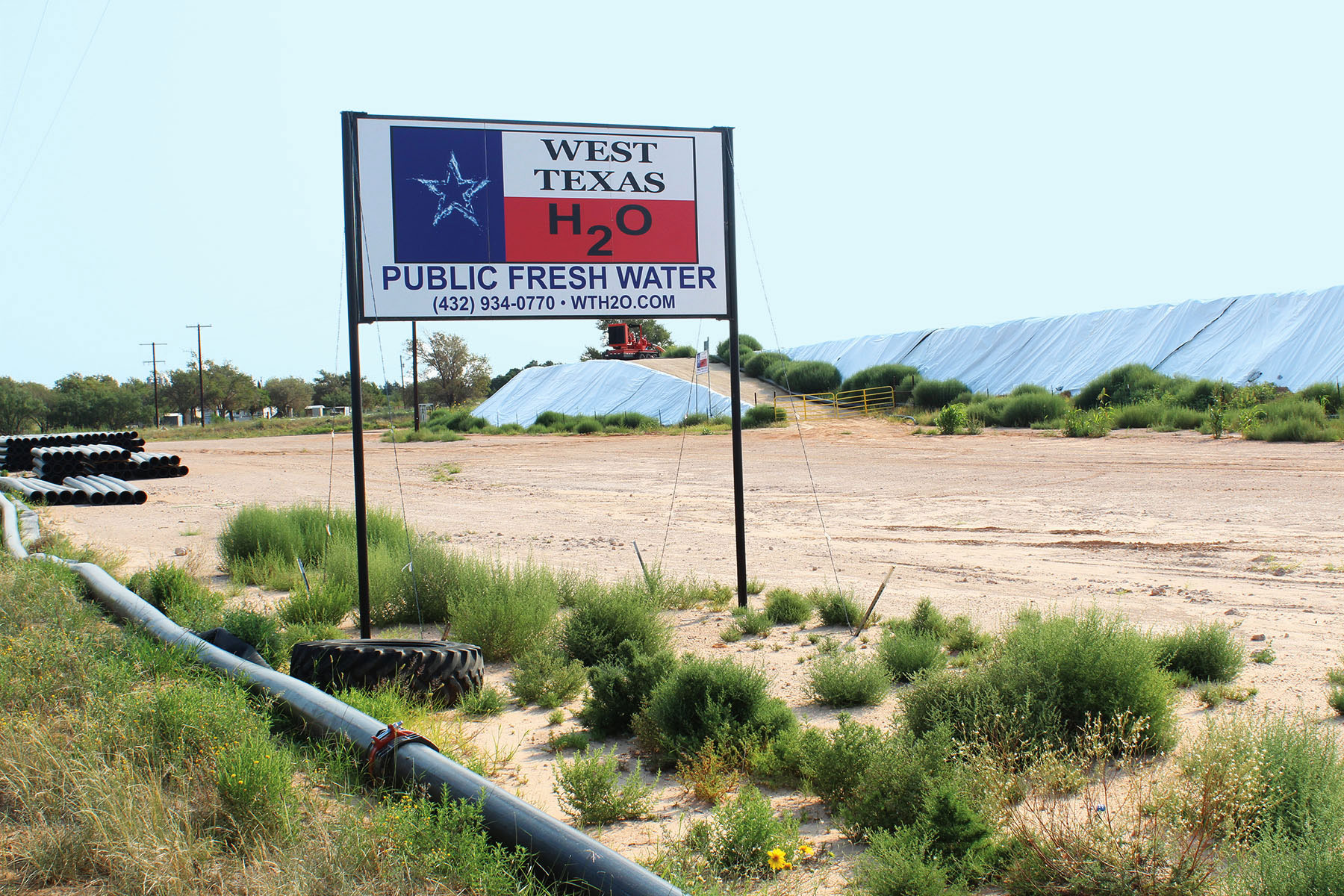
Grella, of West Texas H2O, told local water regulators last year that oil companies are demanding a “mind-boggling” volume of groundwater from his company and other commercial water sellers.
In 2013, the town of Barnhart in nearby Irion County ran out of water amid a withering drought and soaring demand for water to frack wells. Town officials had to truck in bottled water for 112 residents while a backup well was drilled. The same year, wells began to pump air in Carrizo Springs, a South Texas town in the dusty southwest portion of the Eagle Ford Shale, the locus of some of the nation’s most frenzied fracking.
If pumping isn’t slowed in Howard County, the same fate could await the Phillipses and their neighbors, said John Campbell, board president of the Permian Basin Underground Water Conservation District, which regulates groundwater in the county.
“[West Texas H2O] saturated the area with wells, which probably will deplete them or run them out of water eventually,” Campbell told the Observer. “We don’t want anybody to run out of water.”
“I hope they don’t let anybody else come in and just drill willy-nilly without any kind of check on them.”
After submitting their petition, Charles and Loyce figured the conservation district would shut down the wells or at least place limits on how much water the company could sell. But it wasn’t that easy. Not only has the district failed to put any limits on pumping, it’s been unable to get West Texas H2O to submit water level monitoring data and other documents the company promised to produce last year. Nobody has any idea how much water the company is extracting from the aquifer.
(The company didn’t respond to repeated requests for comment for this story.)
Folks in Howard County are worried that the hands-off approach may invite even more water mining in the area.
“I hope they don’t let anybody else come in and just drill willy-nilly without any kind of check on them,” said Nancy Koger, who signed the petition and lives across the highway from the Phillipses.
The Phillipses and their neighbors worry that their property values will plummet if water wells here bottom out. Those who decide to stay could be forced to pay inordinate fees to have water trucked in. The neighborhood would be transformed from a quiet country nook to a ghost town.
“Oil is all right, but the oil isn’t going to do any good if we don’t have water to drink,” Charles said.
–
Howard County’s seat, Big Spring, takes its name from an ancient watering hole once used by buffalo and antelope, as well as the Native Americans who hunted them. The spring was an important water source for Anglo settlers as they trekked west, and for ranchers who eventually settled the town in the 1870s. But by the 1920s, after heavy use by settlers and the railroad industry, the spring ran dry. (The city now fills the spring artificially with well water. ) However, Big Spring’s inhabitants soon realized they were sitting atop another, exponentially more bountiful source of groundwater.
Formed 10 million years ago when sediments filled in eroded channels across the Rocky Mountains, the Ogallala stretches from South Dakota to West Texas. It is one of the world’s largest and most depleted aquifers. Since World War II, it has been harnessed to grow commodity crops in the Midwest and Southern Plains, accounting for almost 30 percent of irrigated farmland in the United States. But after decades of intensive pumping, the water table has dropped precipitously. In parts of the Panhandle counties of Parmer, Hale and Swisher, groundwater levels have dropped by 80 to 100 feet since 1990.
The southernmost reaches of the Ogallala underlie the northern half of the Permian Basin, bisecting Howard County before giving way to the Edwards-Trinity formation. Here, at the Ogallala’s terminus, the aquifer’s layers start to “pinch out,” thinning to just a few feet thick in some places, said John Tracy, director of the Texas Water Resources Institute at Texas A&M University.
In Howard County, groundwater is in such short supply that only 8 percent of farm acres are irrigated, according to the U.S. Department of Agriculture. Almost all cotton grown here is watered only by rainfall.
“Oil is all right, but the oil isn’t going to do any good if we don’t have water to drink.”
And though cotton is Howard County’s dominant cash crop, oil is king in this hardscrabble part of West Texas. In Howard County alone, the oil industry provides 2,800 jobs and has a total annual economic output of $4.5 billion. It supports a litany of ancillary services, such as waste disposal, geological consulting, contract drafting, welding and construction. Along Interstate 20 in Big Spring, billboards advertise jobs for commercial truck drivers. Others offer a quick payday for landowners: “We buy minerals!”
Howard County has been abuzz with petroleum-related activity since 1926, but the most recent boom came in 2011, when a combination of fracking and horizontal drilling techniques unleashed the potential of the Cline Shale, a promising 10-county play east of Midland. Since then, the oil industry has converged on this part of West Texas like never before, utilizing fracking techniques to tap a vast, 20 billion-barrel oil reserve once thought unreachable.
The Phillipses’ neighborhood is sandwiched between I-20, a major industry corridor, to the south and the bustling oil fields to the north, where towering frack rigs jut skyward from cotton fields, and tank batteries are as ubiquitous as cattle. “It looks just like Midland out here now,” Loyce said. “It’s crazy to see how built up it is.”
West Texas H2O has erected one such holding pit just a mile southeast of the Phillipses’ home. About 12 feet in height and surrounded by a fence, the 25 million-gallon pit is a near-perfect square wrapped in a torn white tarp. Though the structure is easily seen from the road, it’s too tall for passing motorists to see inside — but from the air, it has the cerulean shimmer of a vast lake.
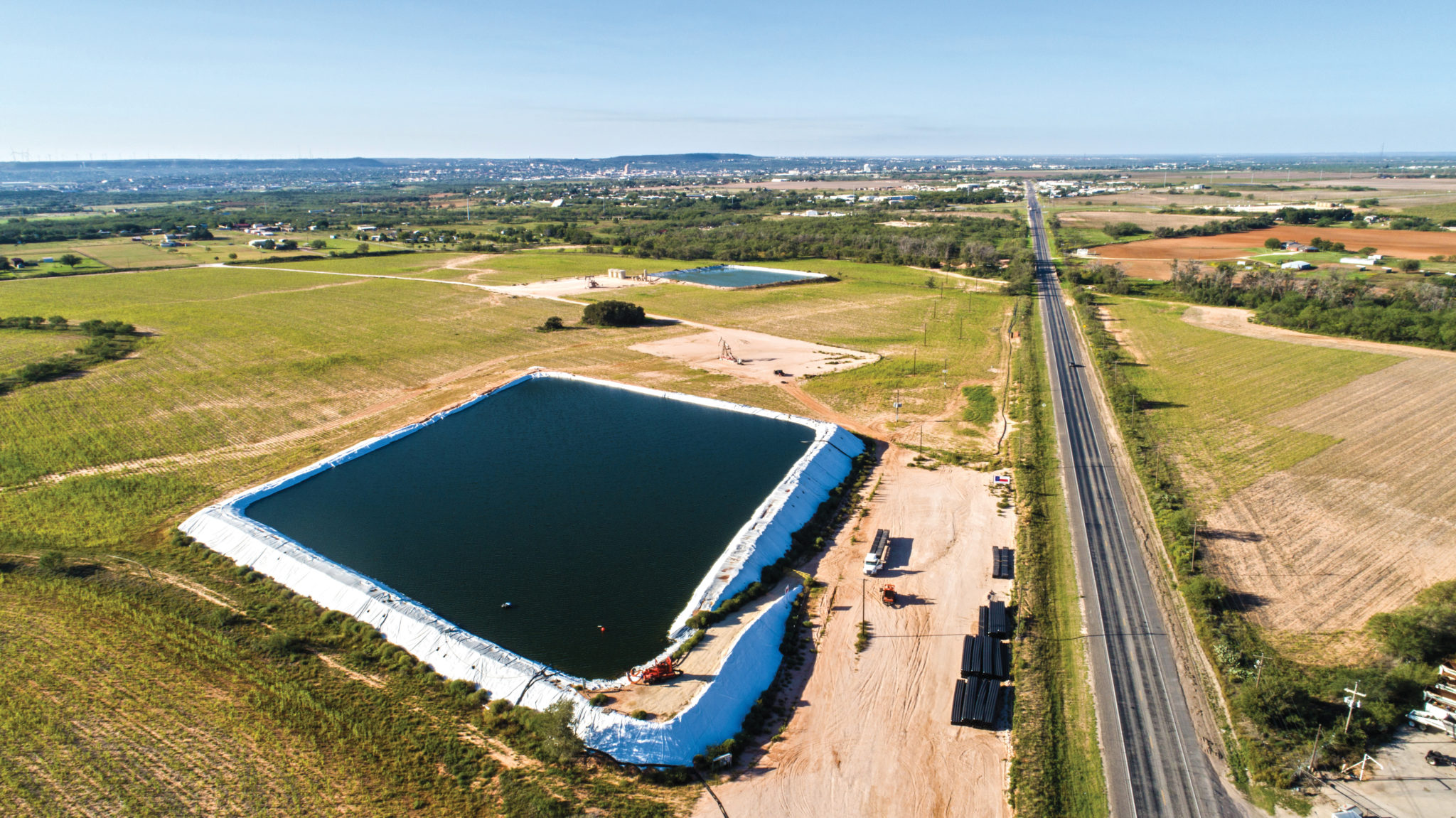
While water used for fracking makes up only 1 percent of groundwater use in Texas, it represents “a big chunk” of water use in hotbeds of oil and gas activity, said Venkatesh Uddameri, director of the Water Resources Center at Texas Tech University. In Howard County, it constitutes 20 percent of the average annual water use. “If you look at statewide numbers, they don’t quite give you the picture. If you pull 5 million gallons from a well over five days, in the grand scheme of things, it’s a small amount,” Uddameri said. “But can the aquifer sustain that type of pumping? … That’s what we have to look at on a very local scale.”
Howard County Judge Kathryn Wiseman questions whether using groundwater for fracking is sustainable. She said people here know their water could eventually run out, but they’re reluctant to criticize the oil industry. “It’s this whole ball of worms. And no one wants to talk about it,” Wiseman said. “But you can hardly stop it, because our economy would crash.”
When I met Wiseman in her office inside the county courthouse in September, she pointed to her bookshelf, which held a copy of The Fracking Truth, a hagiography of the hydraulic fracturing process by Chris Faulkner, the self-titled “frack master” who’s been brought low by allegations that he ran an $80 million scam to inflate his company’s earnings and misappropriate investor money. Wiseman said she has used it as a reference to learn about fracking and suggested I could do the same, but added a note of caution: “Just remember that it’s put out by oilmen, whatever that’s worth.”
–
Texas is distinct from other states in that it gives landowners the absolute right to pump the groundwater underneath their property, regardless of how it may affect others nearby. This peculiar doctrine is called “the rule of capture.” In many areas with significant groundwater, however, residents have voted to form local groundwater conservation districts, which can place restrictions on pumping. These local water conservation districts, about 100 of them statewide, have some say-so over how much water can be pumped from aquifers and how best to conserve the resource.
But many districts are underfunded, lack good science and do little more than issue permits. Some, like the Permian Basin Underground Water Conservation District, don’t even have a good handle on how much water is pumped in their jurisdiction.
“The reality is that even if a groundwater district has the best of intentions, they are severely limited by a lack of resources on every level,” said Amy Hardberger, a water law expert and associate dean of St. Mary’s University School of Law. Districts that choose to conserve aquifers by placing restrictions on commercial water use may open themselves up to a protracted legal battle — a fight most can’t afford. “They’re absolutely stuck,” she said.
West Texas H2O has been given nearly unfettered access to groundwater by the Permian Basin district’s unusually lax rules. The company drilled its water wells before even applying for a permit, something the rules allowed at the time. It also took advantage of the fact that the district had no rules on the books governing the spacing of wells — that is, how far apart one well must be separated from another — or the total volume of water allowed to be drawn from the aquifer. The regulation-free environment has allowed the company to pump and sell a virtually limitless volume of water. Campbell, the board president, said Permian Basin should have had stricter rules in place, but it was caught off guard. The district hadn’t seen a need to tighten rules “until all of this fell in on us,” he said.
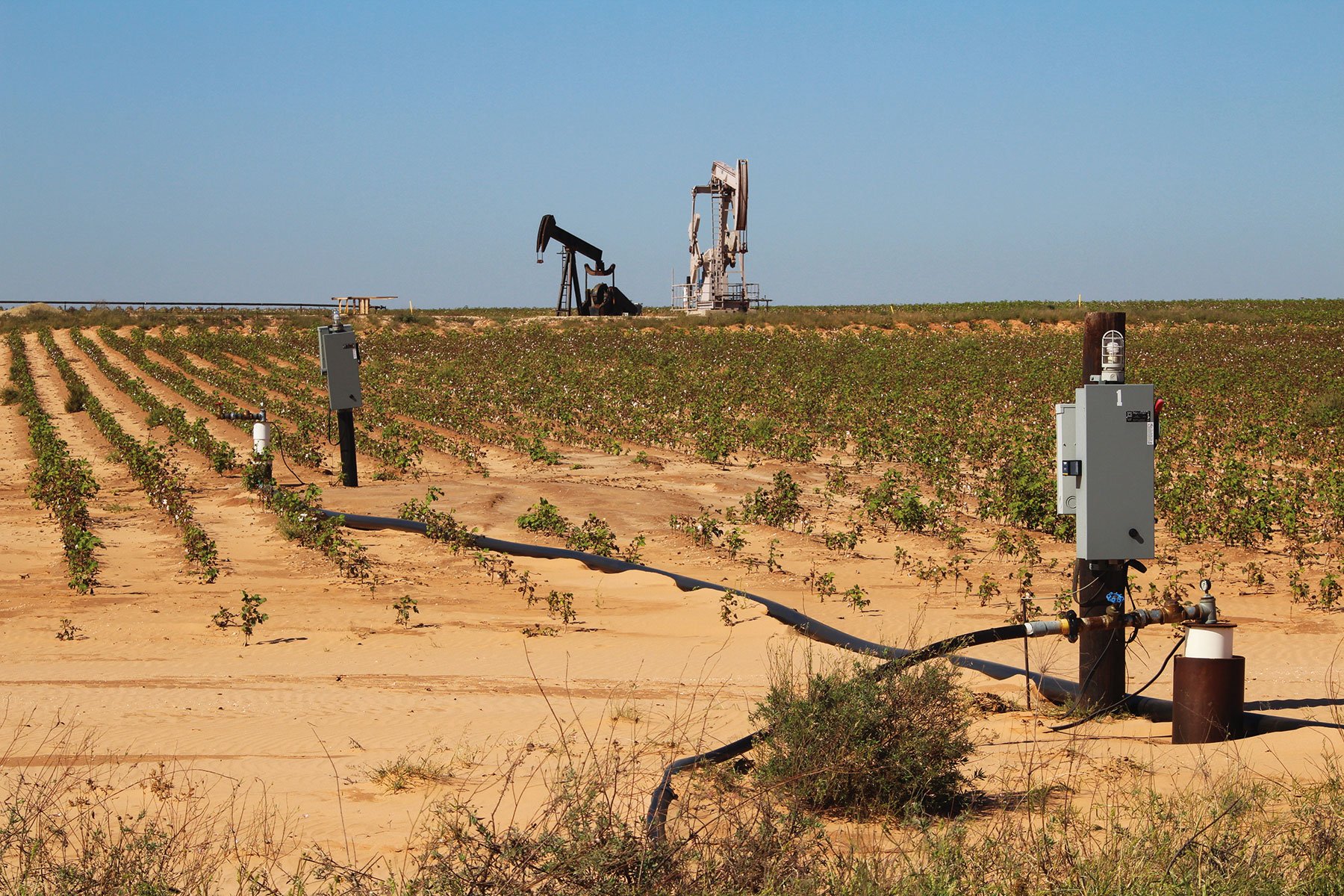
To hedge against the possibility that the company would take away water from the Phillipses and their neighbors, the district’s board agreed to permit the wells, with a few caveats: The company would have to model how its pumping affects nearby landowners and monitor groundwater levels. West Texas H2O would also be required to give advance notice of water level tests, ostensibly so they could be overseen by the district.
In August, eight months after the agreement was struck, West Texas H2O finally provided the district with a single page of water monitoring test results. Four months later, the company still has not conducted tests that would show how its pumping might affect the petitioners.
“It’s this whole ball of worms. And no one wants to talk about it.”
As a result, no one, including the groundwater district, has a clue how much water West Texas H2O is pumping. The district doesn’t require metering on wells and it has failed to get pumping data from the company.
“They say their hands are tied,” Loyce said. “That’s why we laugh every time we see one of those commercials on TV — you know, the one at the bank, where the bank’s being robbed and there’s a security guard there. A lady’s saying, ‘Do something!’ and the security guard says, ‘I’m just a monitor. I tell you when you’re being robbed. You’re being robbed.’” The board could order the company to cease pumping until it runs the required tests but they’re still hoping for cooperation, said Donna Springer, the district’s manager.
After petitioners contested West Texas H2O’s permit applications, Grella told attendees of a December 2016 district hearing that he also was concerned about depleting the Ogallala, and that his company was trying to be “greener and greener all the time.” But he also said he couldn’t guarantee that landowners’ wells wouldn’t go dry.
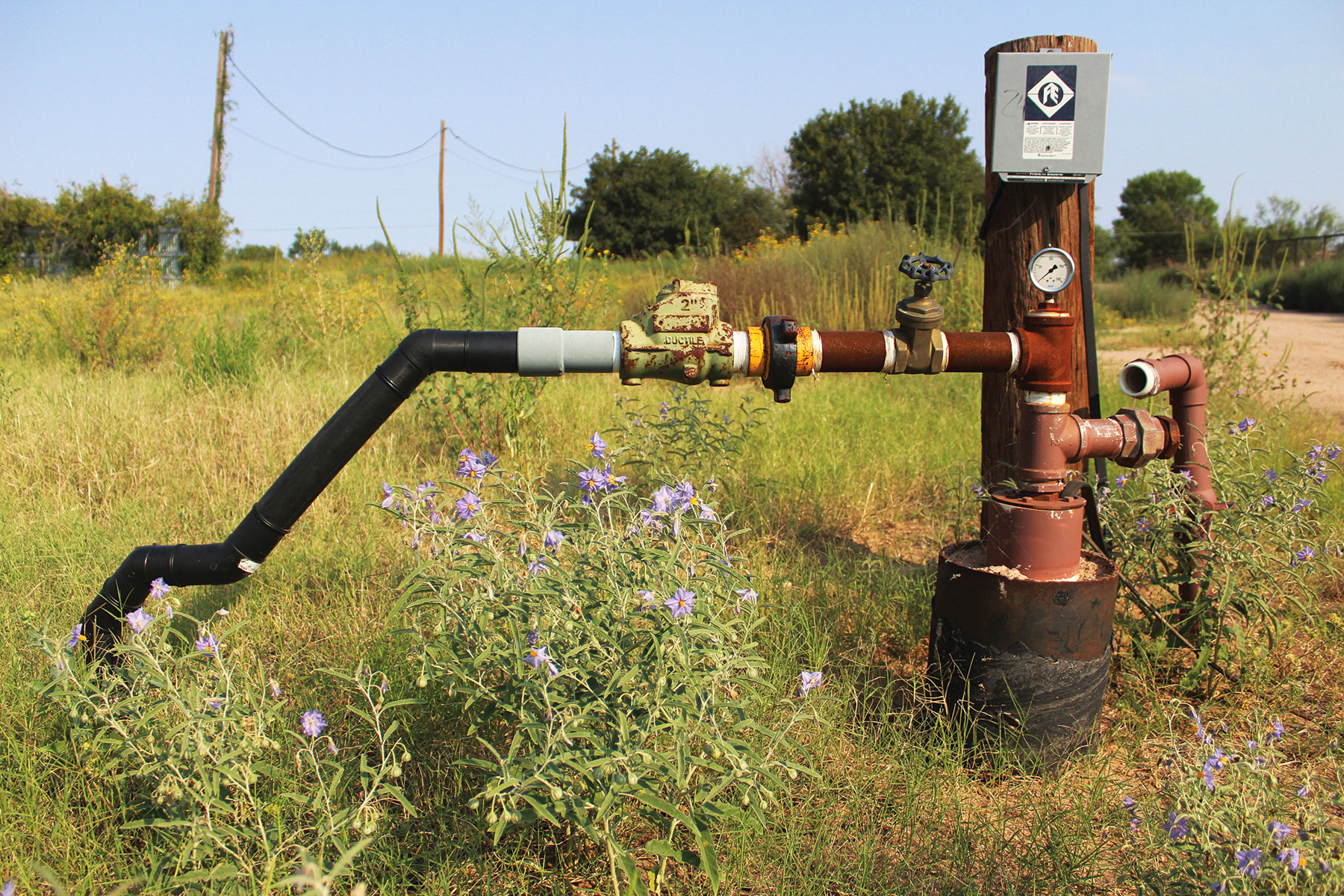
In July, after Charles, Loyce and others raised a fuss, the district voted to adopt new rules mandating wells be registered before being drilled, but no spacing requirements or pumping volume limits were added.
Other groundwater districts that oversee Ogallala pumping have put into place stricter requirements. The North Plains Groundwater Conservation District, which regulates groundwater use in the northern Panhandle, requires wells be spaced a certain distance from each other to reduce the volume that can be pumped from one place. In the High Plains Underground Water Conservation District, which encompasses Lubbock, Amarillo and other agricultural counties that irrigate heavily, all nonexempt wells must have meters installed.
Tracy, the Texas A&M groundwater expert, said dustups such as the one in Howard County sometimes reveal inconsistencies in water district rules. “That happens from time to time, where some water scheme comes in and one district’s rules are more lax than another’s. Then it’s like, ‘Whoa, our water usage just doubled in a couple years. Is this really sustainable?’” Tracy said.
“They say their hands are tied.”
The Santa Rosa, a deep, brackish aquifer whose water is mildly salty, could temper the oil industry’s dependence on the Ogallala and other freshwater sources. The aquifer covers a large portion of the Panhandle and a sliver of West Texas, including Howard County. Water sellers are flirting with developing the resource as a new frontier in water production, said Uddameri, the Texas Tech water expert.
“I think the intent is there,” he said, noting that the Santa Rosa lies farther underground than the Ogallala, and its formation is more tightly packed, making it more expensive and time-consuming to pump. “There’s a question of economics and hydrogeology. We can’t just put the well in and turn it on like we do in the Ogallala.”
At the Permian Basin meeting, Grella said his company is experimenting with brackish water sources and plans to drill 58 wells into the Santa Rosa to replace some of its freshwater production. The company also reuses water that’s previously been used at the Alon refinery in Big Spring, he said.
Grella doesn’t see a slowdown happening anytime soon. Drillers are thirsty for groundwater, and they’ll stay that way until the Permian Basin has been pumped dry or water districts pass stricter rules. “In many ways, we just can’t keep up. It’s just not possible,” Grella said at the hearing. “If oil prices hold, I think we’ll be running water all the time.”


